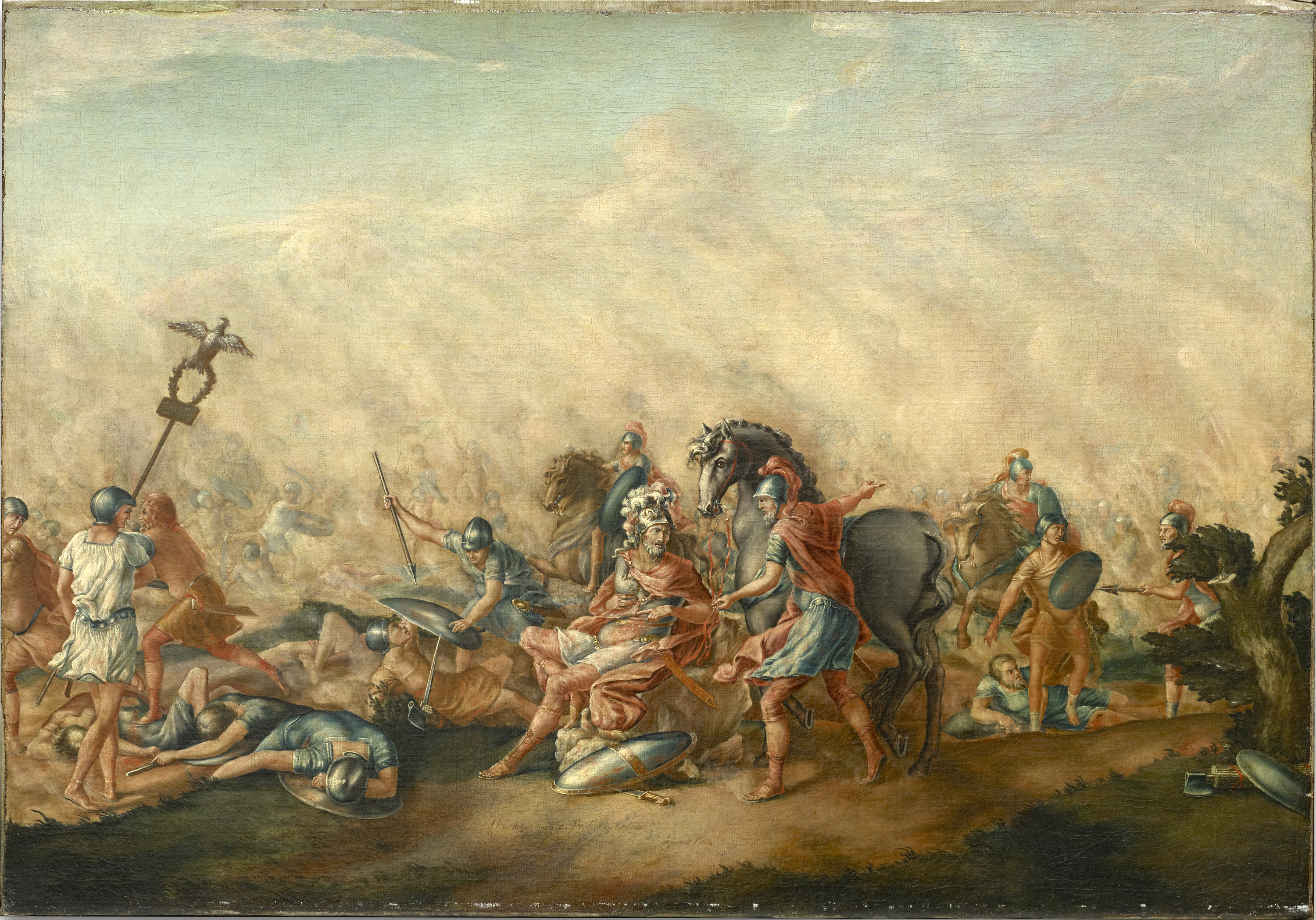1. Overview
Lucius Aemilius Paullus (Lucius Aemilius PaullusLatin; died August 2, 216 BC), also known as Paulus, was a prominent Roman consul who served twice, in 219 BC and 216 BC, during the Roman Republic. He is primarily recognized for his significant military and political career, including his decisive victory in the Second Illyrian War, and for his ultimate demise as a commander at the Battle of Cannae, one of the most catastrophic defeats in Roman history.

2. Early Life and Family Background
Lucius Aemilius Paullus belonged to the prestigious patrician Aemilian gens, one of the most ancient and influential families in ancient Rome. He was the son of Marcus Aemilius Paullus, who had served as consul in 255 BC. This lineage placed him firmly within the highest echelons of Roman society, setting the stage for his own distinguished career in public service and military command.
3. Political and Military Career
Lucius Aemilius Paullus's career was marked by two terms as consul, during which he engaged in critical military campaigns that significantly impacted the Roman Republic. He served alongside key figures, and his consulships saw significant events.
3.1. Consulships
Paullus served two terms as Roman consul, each playing a significant role in the ongoing Roman conflicts.
| Year | Colleague | Predecessors | Successors | Key Events |
|---|---|---|---|---|
| 219 BC | Marcus Livius Salinator | Gnaeus Servilius Geminus | ||
| 216 BC | Gaius Terentius Varro | Gaius Lutatius Catulus |
3.2. First Consulship (219 BC)
Lucius Aemilius Paullus was first elected consul in 219 BC, sharing the office with Marcus Livius Salinator. During this term, he achieved a notable military success by defeating Demetrius of Pharos in the Second Illyrian War. This victory compelled Demetrius to seek refuge at the court of Philip V of Macedon. Upon his return to Rome, Paullus was honored with a Roman triumph in recognition of his accomplishments. Subsequently, he and his colleague were charged with unfairly distributing the spoils of war, though Paullus was ultimately acquitted of these accusations.
3.3. Envoy to Carthage (218 BC)
In 218 BC, following his first consulship, Lucius Aemilius Paullus was selected as one of the envoys dispatched to Carthage. Their mission was to deliver Rome's final ultimatum to the Carthaginians, a crucial diplomatic act that preceded the official outbreak of the Second Punic War. This role underscored his importance in Roman foreign policy at a pivotal moment.
3.4. Second Consulship and the Battle of Cannae (216 BC)
Paullus was elected consul for a second time in 216 BC, serving alongside Gaius Terentius Varro during the escalating Second Punic War. On August 2, 216 BC, they co-commanded the Roman army against Hannibal Barca's Carthaginian forces at the infamous Battle of Cannae. Paullus advised caution in confronting Hannibal directly due to the tactical disadvantages, but Varro, eager for battle, reportedly led the troops against Paullus's counsel. The ensuing engagement resulted in a devastating and crushing defeat for the Roman legions, with tens of thousands of Roman soldiers losing their lives.
4. Death
Lucius Aemilius Paullus met his death during the Battle of Cannae on August 2, 216 BC. In the chaos of the catastrophic Roman defeat, Paullus fought bravely but was ultimately killed on the battlefield, becoming one of the many high-ranking Roman casualties. In contrast, his co-consul, Gaius Terentius Varro, managed to escape the rout. Following Paullus's death, his position as a pontifex (priestly official) was subsequently filled by Quintus Fabius Maximus Verrucosus.
5. Family and Descendants
Lucius Aemilius Paullus had several children. His most famous son was Lucius Aemilius Paullus Macedonicus, who would later become a distinguished Roman general, known for his victory over Macedonia in the Third Macedonian War. Paullus also had at least two daughters, Aemilia Prima and Aemilia Secunda, whose lives are less documented. Another daughter, Aemilia Tertia (also known as Aemilia Paulla), married the renowned Roman commander Scipio Africanus, who famously defeated Hannibal at the Battle of Zama. Through this marriage, Lucius Aemilius Paullus became the grandfather of Publius Cornelius Scipio Aemilianus, who later commanded the Roman forces that ultimately destroyed Carthage at the conclusion of the Third Punic War.
6. Historical Records and Interpretations
Lucius Aemilius Paullus is remembered in various ancient historical accounts and inscriptions. In the epic poem Punica by Silius Italicus, a Roman poet of the 1st century AD, Paullus is depicted as having killed the Carthaginian commander Viriathus before his own death at the Battle of Cannae.
Further historical insights into Paullus's actions are provided by an inscription on a bronze tablet found in Cádiz, Spain. This inscription, known as the Cadiz bronze tablet, records a significant decision made by Paullus:
"The commander-in-chief, Lucius Aemilius, son of Lucius, decided on the liberation of the serfs of the Hastean tribe residing in the tower of Lascuta. They were recognized as owners of the land and fortresses they possessed at that time, and they could continue to hold them as long as the Roman people and the Roman Senate wished. This decision was made on January 12 in the camp."